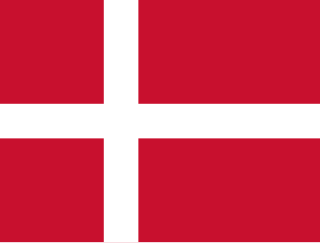 W
WThe Christmas Meeting of 1888 is considered to be the official start of the Faroese National Movement.
 W
WThe Constitutional Act of the Realm of Denmark, also known as the Constitutional Act of the Kingdom of Denmark, or simply the Constitution, is the constitution of the Kingdom of Denmark, applying equally in the Realm of Denmark: Denmark proper, Greenland and the Faroe Islands. The first constitution was adopted in 1849, and the current constitution is from 1953. It is one of the oldest constitutions in the world. The Constitutional Act has been changed a few times. The wording is general enough to still apply today.
 W
WDenmark–Norway, also known as the Dano–Norwegian Realm, the Oldenburg Monarchy, or the Oldenburg realms, was an early modern multi-national and multi-lingual real union consisting of the Kingdom of Denmark, the Kingdom of Norway, the Duchy of Schleswig, and the Duchy of Holstein. The state also claimed sovereignty over two historical peoples: Wends and Gutes. Denmark–Norway had several colonies, namely the Danish Gold Coast, the Nicobar Islands, Serampore, Tharangambadi, and the Danish West Indies.
 W
WCarl Aage Hilbert, born in Copenhagen to Doretha Marie and Emil Christopher Hilbert, was the Danish Prefect of the Faroe Islands from 1936 until 1945. During this period, the Faroe Islands had the status of an amt (county) of Denmark.
 W
WThe Norsemen were a North Germanic ethnolinguistic group of the Early Middle Ages, during which they spoke the Old Norse language. The language belongs to the North Germanic branch of the Indo-European languages and is the predecessor of the modern Germanic languages of Scandinavia. During the late 8th century, Norsemen embarked on a large-scale expansion in all directions, giving rise to the Viking Age. In English-language scholarship since the 19th century, Norse seafaring traders, settlers and warriors have commonly been referred to as Vikings. The identity of Norsemen derived into their modern descendants, the Danes, Icelanders, Faroe Islanders, Norwegians, and Swedes, who are now generally referred to as 'Scandinavians' rather than Norsemen.
 W
WThe Sheep Letter is the oldest surviving document of the Faroe Islands. It is a Royal Decree enacted on the 28 June 1298 by Duke Haakon who later became King Haakon IV of Norway. It deals principally with sheep husbandry, but also dealt with other matters and functioned as a kind of constitution, removing most administrative power from the local Thing to the king and his representatives. it was drafted on the advice of Erlend, Bishop of the Diocese of the Faroe Islands in Kirkjubøur and of Sigurd, Lawspeaker of Shetland, whom Duke Haakon had sent to the Faroes to consider the deficiencies in the agricultural law.
 W
WSkansin is a historic fortress in Tórshavn, the capital of the Faroe Islands.
 W
WThe Sloop Period Faroese: Slupptíðin is a period in Faroese history, where the Faroese society transformed from a feudal society to a semi-industrial society. The period spans from the 1880s to the beginning of World War II.
 W
WWesterbeek was a Dutch East India Company sailing ship, built in 1722 in Amsterdam. It was 145 feet (44 m) long and 650 tons.